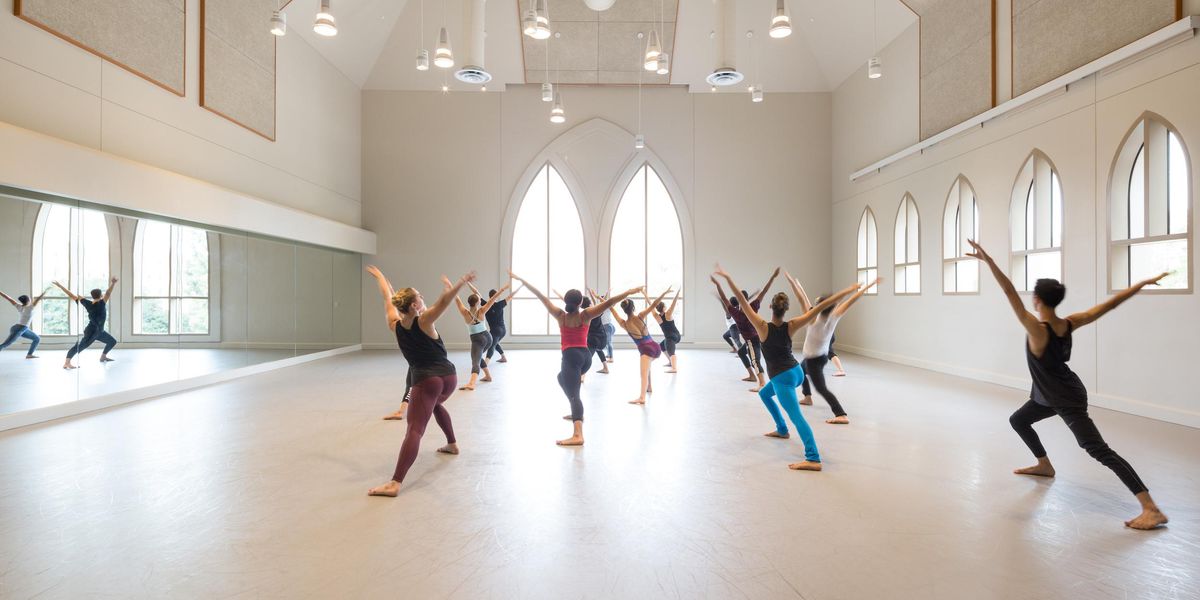Quick Q&A: Zoe Scofield
The Seattle-based choreographer on grappling with time and memory
Dancer/choreographer Zoe Scofield is truly wedded to collaboration—her Seattle-based company, zoe/juniper, is a partnership with her husband, the sculptor and video artist Juniper Shuey. They merge video, original music, and theatrical staging to create dance that draws from poetry, film, and Greek tragedy to address the flow of time and its relationship to memory.
Scofield and Shuey first paired up in 2004 and have performed at On the Boards, New York Live Arts, and Jacob’s Pillow Dance Festival. They’re developing their next work,
No One to Witness, throughout the year in a series of “studies” probing the theme of relationships: The first was a site-specific duet in a private home, the second was built in a weeklong residency at Seattle’s Frye Art Museum. Their evening-length work A Crack in Everything tours to the Dance Center at Columbia College Chicago Feb. 14–16. Writer Jeremy D. Goodwin spoke to Scofield in October.
At right: Photo of Scofield by
Kelly O, Courtesy zoe/juniper.
When you landed in Seattle in 2001 after working in Boston and Toronto, how was the transition?
At first I felt I was not fitting in at all. I had sort of stopped dancing. It was a very contact-improv–based world out here—people like Dayna Hanson and 33 Fainting Spells and Pat Graney, and my style was just really different from that. I wanted to dance, so I thought I’d just try to make my own work.
Are there advantages to being out of the glare of New York?
The thing Seattle has to offer, that New York basically can’t, is time and space. I’m allowed to have a certain amount of controlled naiveté. It’s like, This is a thing I’m really interested in doing, and if I knew how hard it was, I’d never start. I see a lot of people take risks here. It’s not New York, so there’s not that pressure.
How has Seattle affected your aesthetic?
There’s a really strong music scene in Seattle, and also a really tight-knit theater scene, and there’s not so much separation between all the worlds. It doesn’t take as much effort to have things just start happening. I started working with Morgan Henderson [of band Fleet Foxes] and he’d never worked with choreographers before, but for some reason I just knew it would really work. Seattle can be an incubator.
You’re a certified Ashtanga yoga instructor. What draws you to it?
I think most dancers have some other way to be physical that augments dancing. I like the rigorousness of it, the repetition—the idea of learning how to be uncomfortable.
What makes you and Juniper a good creative team?
I think of dance as ultimately a visual art form, and he thinks about visual art as a very physical, kinesthetic experience.
Your work tends to be multimedia and high-concept. When you’re building a piece, how do the different strands coalesce?
It always comes from a conceptual idea. There’s never really a linear narrative in our work, but there’s a story-ness. We start with a series of photographic investigations. There’s visual images I see in my head that just have to happen.
The idea is to let the dance and the visuals keep shaping and growing toward each other in tandem, constantly informing each other.
Photo by Juniper Shuey, Courtesy zoe/juniper.
What aspects of
No One to Witness are you developing at the Frye Art Museum? We’ll be making casts of parts of the dancers’ bodies and leaving them in the space. And over the period of a performance, the casts and video pieces will start to overtake the actual dancing. Eventually, people will visit and see a video installation and experience the performance by what is left behind.
Is it tricky to negotiate the balance between concept and dance?
I get to make a choice—if the concept isn’t coming through in a certain part, can I sacrifice it in that moment or do I really want it to come through? I try not to get so in love with my ideas that I can’t see what’s actually happening.
Your relationship with time seems to be a theme in
A Crack in Everything. Where is that coming from? I have such a bizarre relationship to time. My father had a car accident when I was 6 that was a huge thing; it really separated our lives into before and after. It became this event that I kept going back to again and again, almost trying to fold and unfold and refold the situation to find another outcome or another possibility.
The constant examination and re-examination of a memory almost changes the thing itself. I see it as this origami of time. I don’t think things actually happen in a linear way. We have a constellation of experiences and feelings that we arrange and rearrange and move around.




